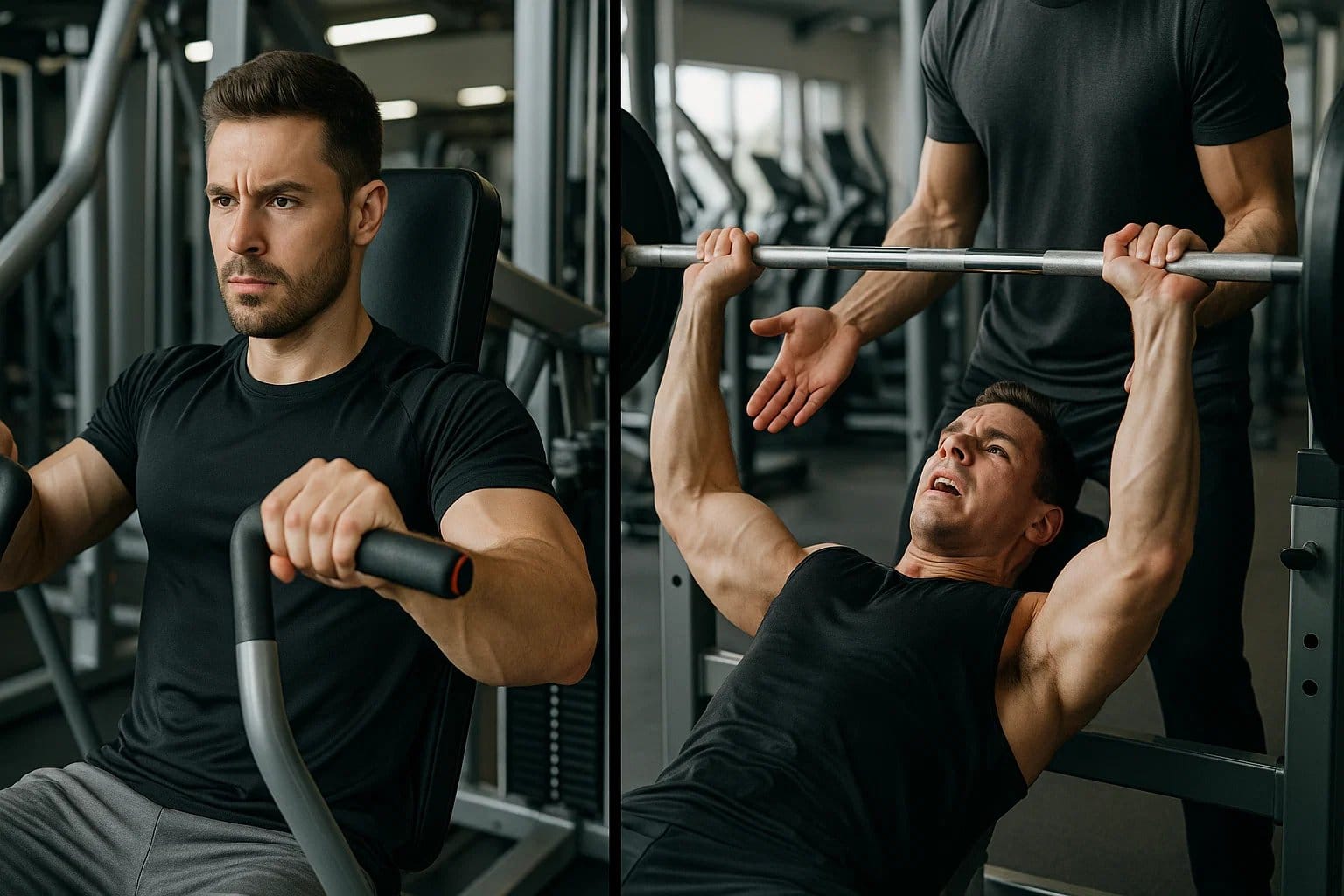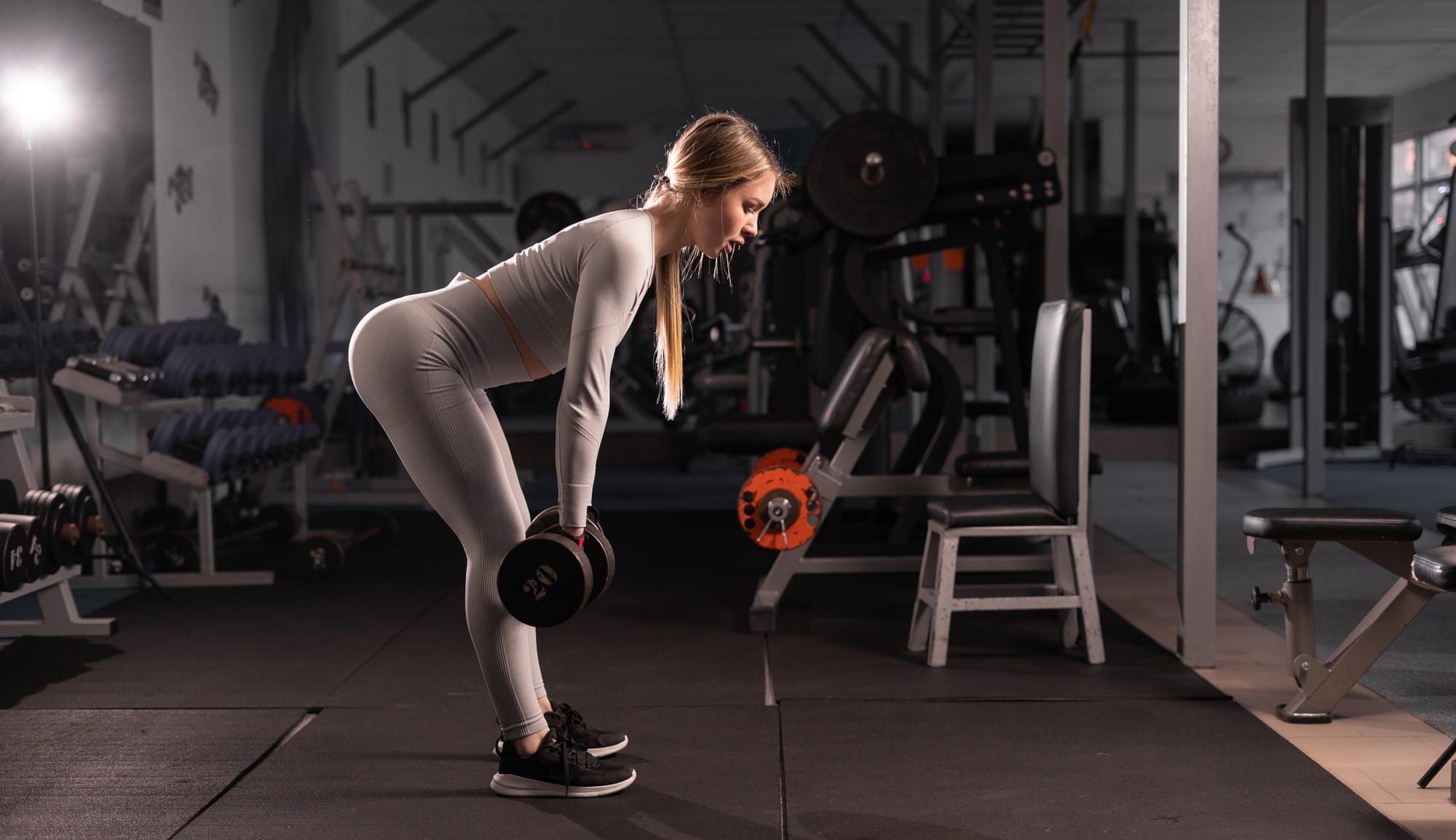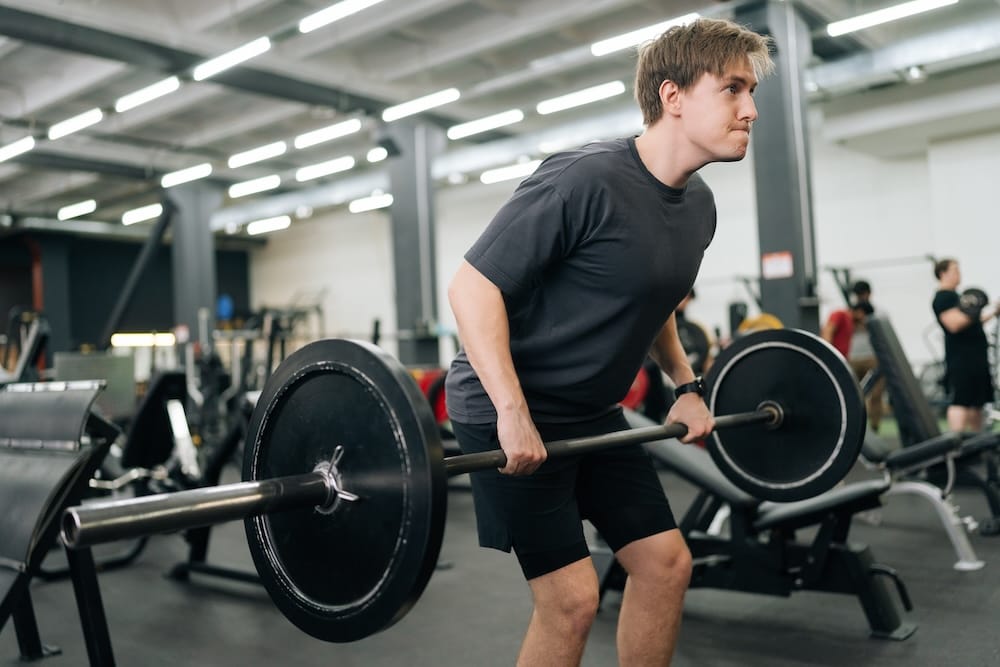The Best Home Workout Plan for Building Muscle Without Equipment
The idea that you can achieve real muscle gains without stepping foot in a gym might sound surprising, but it's entirely possible.
In today's fast-paced world, finding time to hit the gym can be tough. With packed schedules, family responsibilities, and the rising cost of gym memberships, more and more people are looking for simpler, more accessible ways to stay fit. That's where the concept of home workout muscle building comes in. With the right plan, the right mindset, and consistent effort, you can get stronger, leaner, and healthier right from your living room, bedroom, or even your backyard.
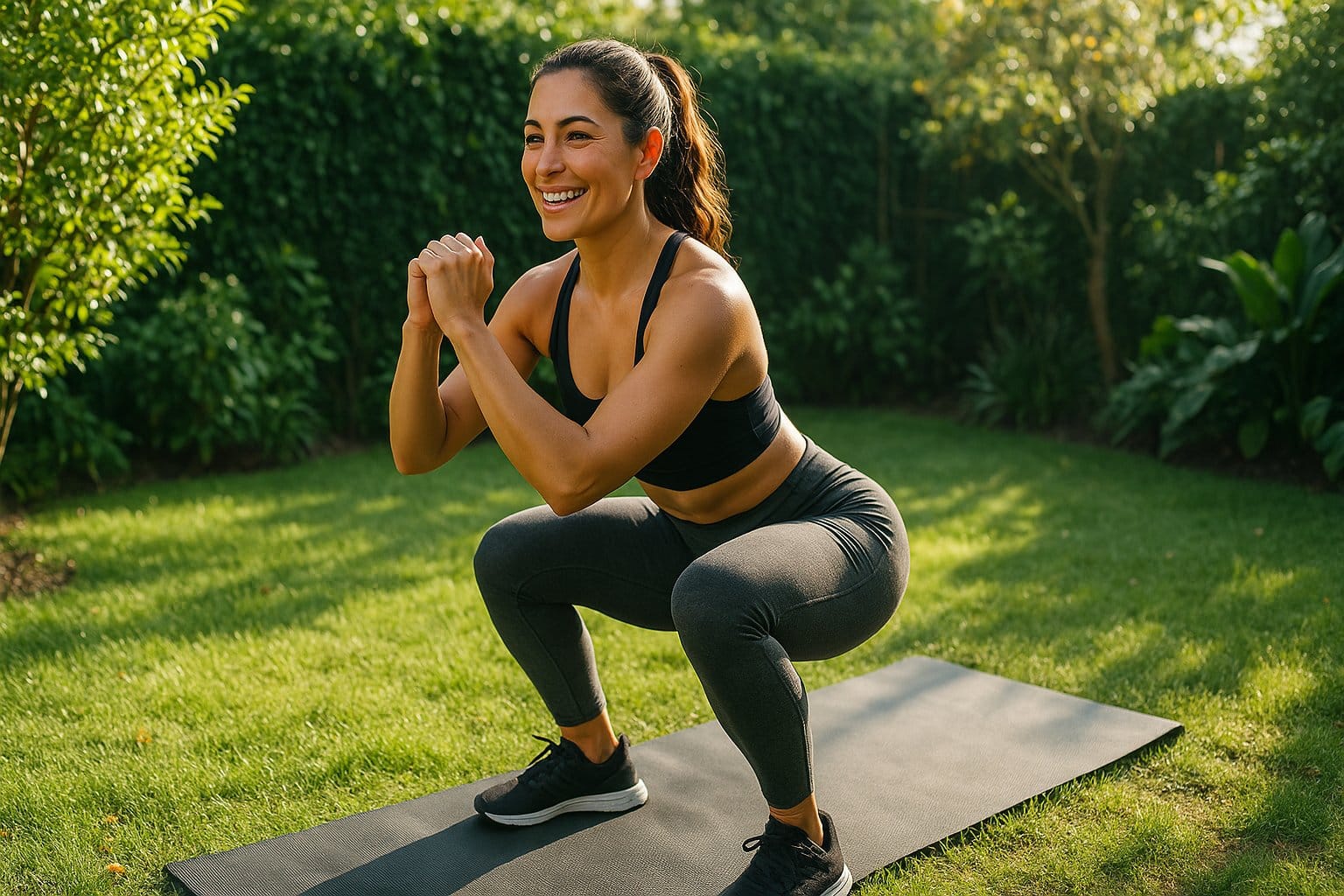
Why Train at Home?
In today’s world, convenience often dictates our choices. Between work, family, and social obligations, it’s easy for fitness to fall off the priority list. A home workout muscle building eliminates one of the biggest hurdles: time. No need to pack a gym bag, commute, or wait for equipment. It’s just you, your body, and the space you have available. Home training also gives you full control. You can choose your schedule, wear whatever you want, and create a routine that fits your goals and lifestyle. For those just starting out, it can be less intimidating than walking into a crowded gym. And over time, the comfort and freedom of working out at home can lead to better consistency—the true key to long-term results.
Equipment-Free Muscle-Building: Is It Possible?
One of the biggest misconceptions in fitness is that you need heavy weights to build muscle. While external resistance like dumbbells and barbells certainly help, they’re not the only way. Muscle growth, also known as hypertrophy, happens when your muscles are challenged beyond their normal capacity.
This can be done through bodyweight exercises by adjusting variables like volume (reps and sets), tempo (speed of movement), range of motion, and rest periods. Exercises like push-ups, squats, lunges, planks, and their many variations can activate and fatigue your muscles just as effectively as machines or free weights.
The key is progression. By gradually making movements more difficult and keeping your muscles under tension longer, you create the stimulus they need to grow. So yes, not only is equipment-free muscle-building possible—it’s powerful when done right.
Understanding Progressive Overload at Home
Progressive overload means applying gradual increases in difficulty over time. At home, this could look like:
- Increasing reps week to week
- Slowing down each rep (e.g., 3 seconds down, 1 second up)
- Reducing rest periods
- Progressing to harder variations
Bodyweight Progression Examples
Push-Up Progressions:
Wall Push-up → Knee Push-up → Standard → Diamond → Decline → Archer → Plyo Push-ups
Squat Progressions:
Half Squats → Full Bodyweight → Jump Squats → Bulgarian Split Squats → Pistol Squats
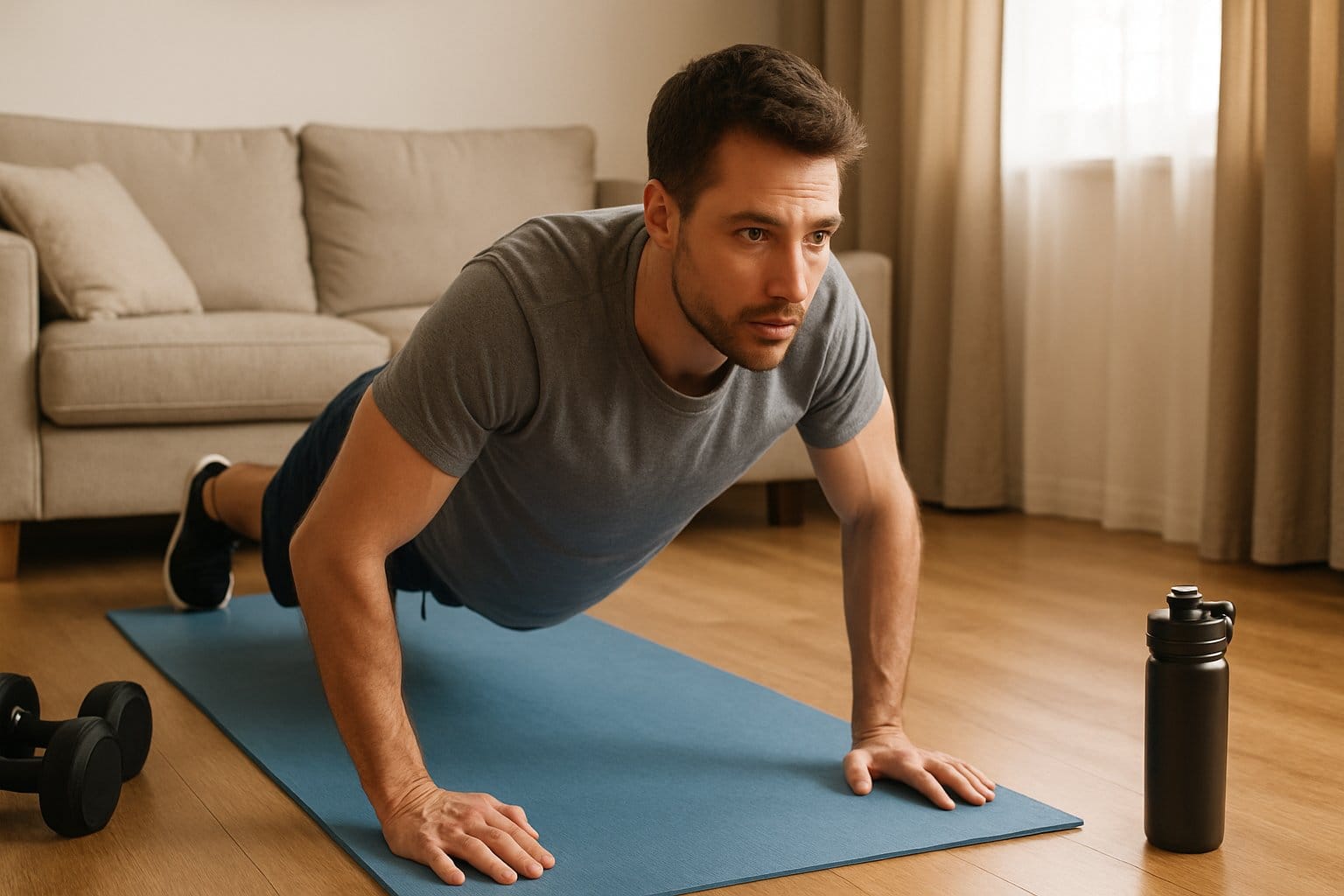
4-Week Progressive Home Workout Muscle Building Plan
A successful home workout muscle building begins with structure. This 4-week progressive plan is designed to build muscle using nothing but your body weight. Each week, you'll follow a simple yet effective schedule that targets different muscle groups while gradually increasing difficulty.
The idea is to push your muscles a little harder each time you train so they have a reason to grow. Expect to train four days a week, focusing on upper body, lower body, core, and a full-body conditioning session.
Week 1: Foundation Phase
Day 1 – Upper Body
Push-ups: 3 sets of 10
Incline Push-ups: 3 sets of 10
Chair Triceps Dips: 3 sets of 12
Plank Shoulder Taps: 3 sets of 20 (10 per side)
Day 2 – Lower Body
Bodyweight Squats: 3 sets of 15
Glute Bridges: 3 sets of 12
Step-ups (using stairs or a sturdy chair): 3 sets of 10 each leg
Wall Sit: 3 sets of 30 seconds
Day 3 – Core
Plank: 3 sets of 30 seconds
Leg Raises: 3 sets of 12
Mountain Climbers: 3 sets of 30 seconds
Russian Twists: 3 sets of 20
Day 4 – Full Body Conditioning (Optional)
Jump Squats: 3 sets of 12
Push-ups: 3 sets of 10
Burpees: 3 sets of 10
Plank: 3 sets of 30 seconds
Week 2: Rep Overload
Increase reps by 2–5 per set.
Example: Push-ups move from 10 reps to 12–15.
Week 3: Tempo & Time Under Tension
Slow each movement (3 seconds down, 1 second up) to increase difficulty.
Hold planks and wall sits 15 seconds longer.
Week 4: Max Challenge
Reduce rest time between sets to 30–45 seconds.
Add explosive movements like plyo push-ups or jump lunges.
Focus on full range of motion and clean form.
Tips for Maximizing Muscle Gains at Home
A home workout muscle building is more than just doing workouts, it’s about doing them right. First, pay close attention to your form. Bodyweight exercises are only effective when you perform them with control and full range of motion. Focus on the mind-muscle connection, feeling each rep work the targeted area.

Second, your diet matters. To build muscle, your body needs fuel, especially protein. Make sure your meals support your training by being rich in whole foods, lean proteins, healthy fats, and complex carbs.
Third, don’t overlook recovery. Sleep, hydration, and active rest days are essential for your muscles to rebuild and grow. Finally, stay consistent. It’s better to train three times a week consistently for months than to train six days one week and burn out the next. Track your progress, celebrate small wins, and enjoy the journey.
Nutrition for Muscle Growth
Training is only half the equation, real gains are also made in the kitchen. Proper nutrition is essential to fuel your workouts, speed up recovery, and enable real muscle growth.
- Eat Enough Protein: Aim for ~1.6 - 2.2g of protein per kg of body weight daily.
- Balance Carbs and Fats: Don’t fear carbs, they’re your energy source.
- Avoid Processed Junk: Stick to whole foods like chicken, eggs, rice, oats, olive oil, and veggies.
- Stay Hydrated: Dehydration slows down recovery and performance.
- Consider Smart Supplementation: Creatine, whey protein, and vitamin D3 are common additions that support muscle building when your diet isn’t enough.
Not sure how many calories you need to build muscle?
Use our Body Fat Calculator to estimate your current body composition and get personalized calorie and protein targets.
FAQs and Recovery Tips
Can I really gain muscle without lifting weights?
Yes, you can. Muscle growth is driven by progressive overload, not necessarily by heavy weights. By challenging your body with increased reps, slower tempos, and advanced bodyweight variations, you can build significant muscle at home.
How often should I work out to build muscle at home?
For most people, working out 3 to 5 times per week is ideal. Consistency matters more than intensity in the beginning. Ensure that you are hitting all major muscle groups and giving yourself enough recovery time between sessions.
What should I eat to support my home muscle building workouts?
A diet rich in lean proteins, complex carbohydrates, healthy fats, and plenty of fruits and vegetables is key. Make sure you're eating enough calories to fuel muscle growth and recovery. Drinking plenty of water and avoiding processed foods will also help you stay on track.
Conclusion
You don’t need fancy equipment, a gym membership, or hours of free time to get strong. With a little space, a good plan, and dedication, home workout muscle building is entirely within reach. This approach not only saves time and money but also empowers you to take control of your fitness journey. By training smart, staying consistent, and believing in the process, you’ll build a healthier, stronger version of yourself, right at home.
Don’t forget to download the Flex Fitness app for more tips and content like this!
Related articles

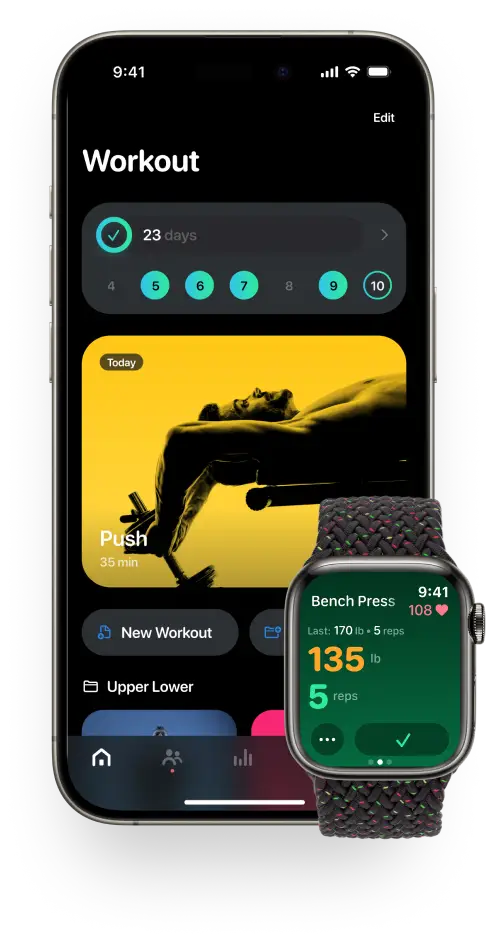
Get fit with Flex
Build muscle & lose weight fast for free.
Available on iPhone + Apple Watch


